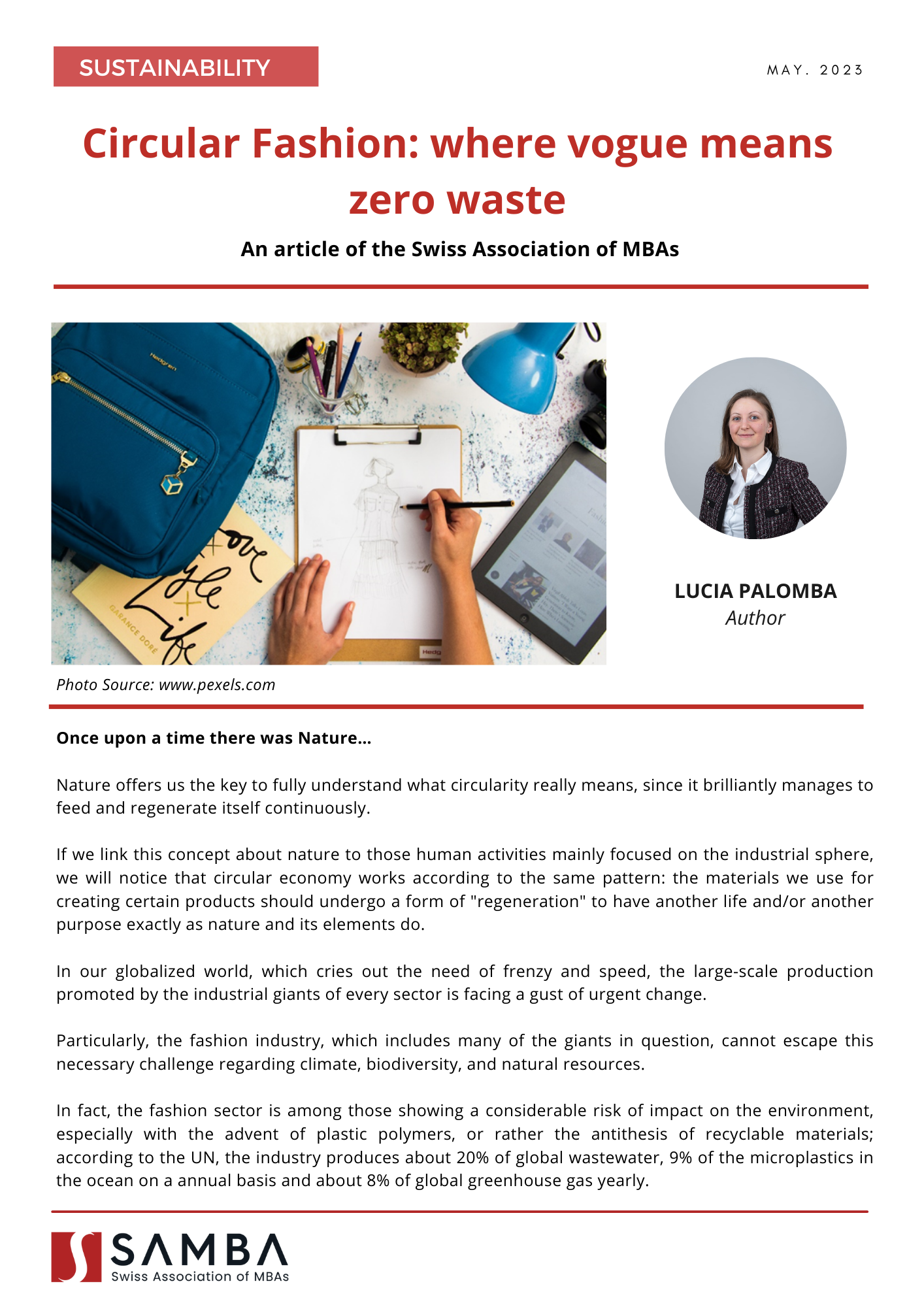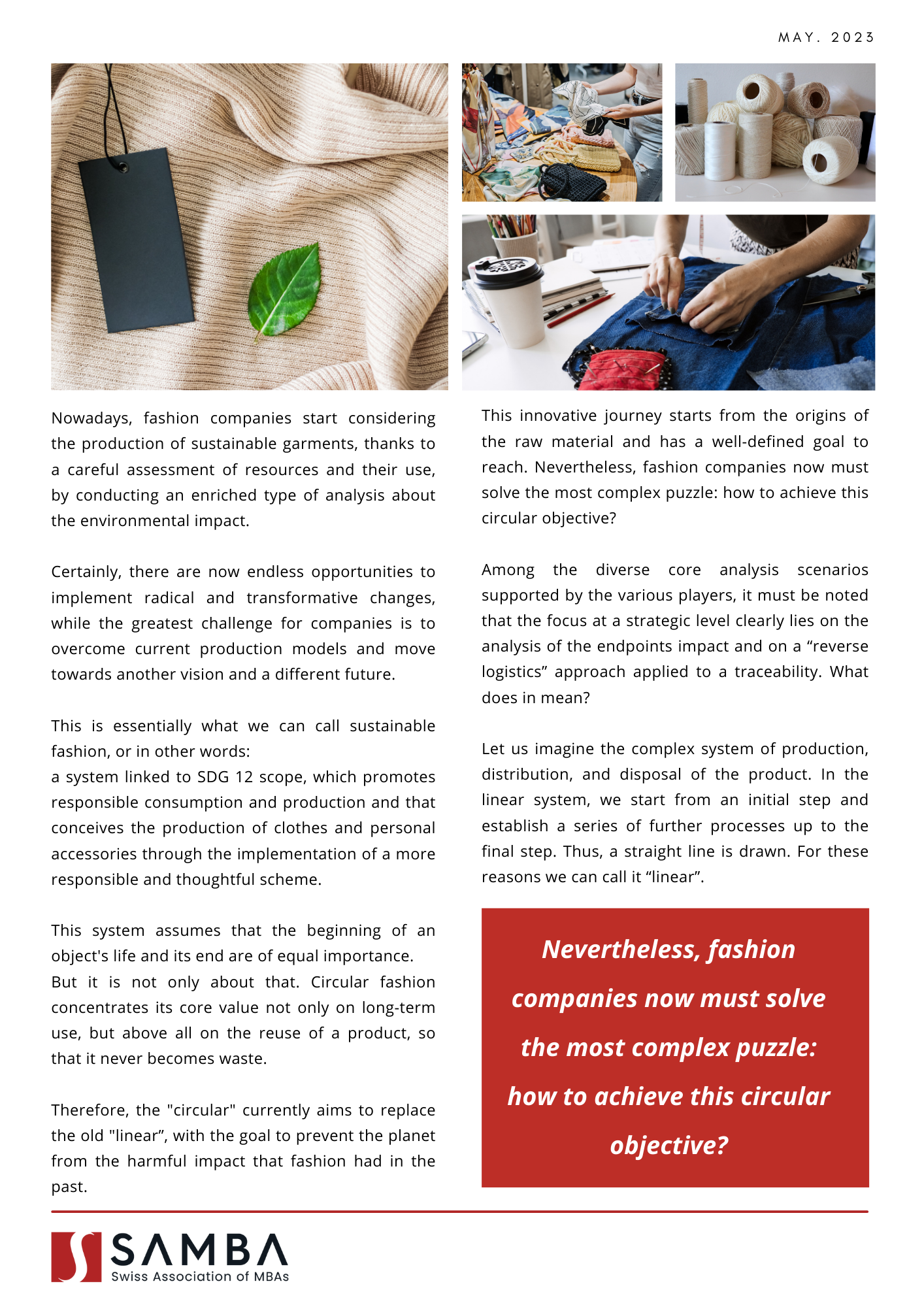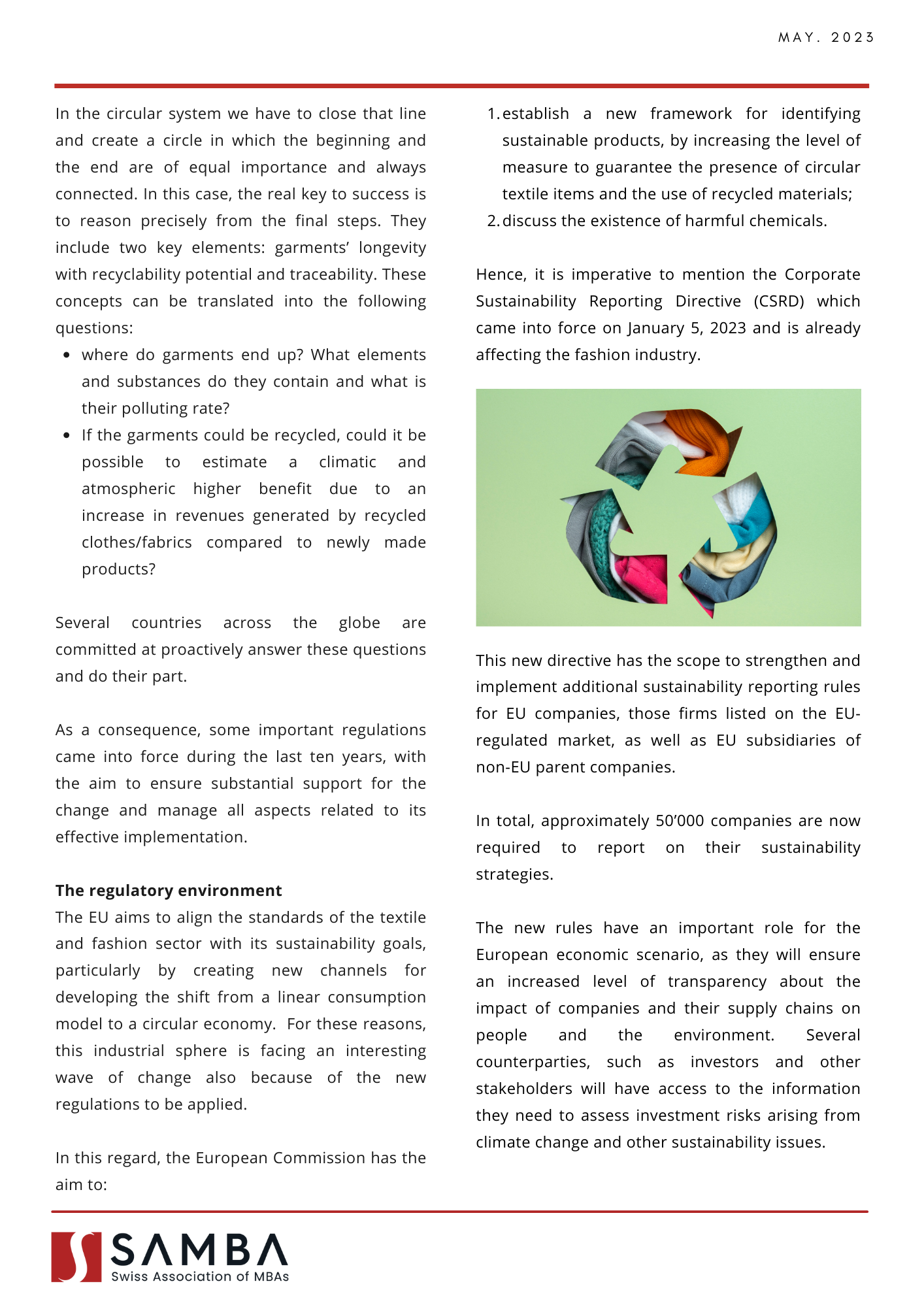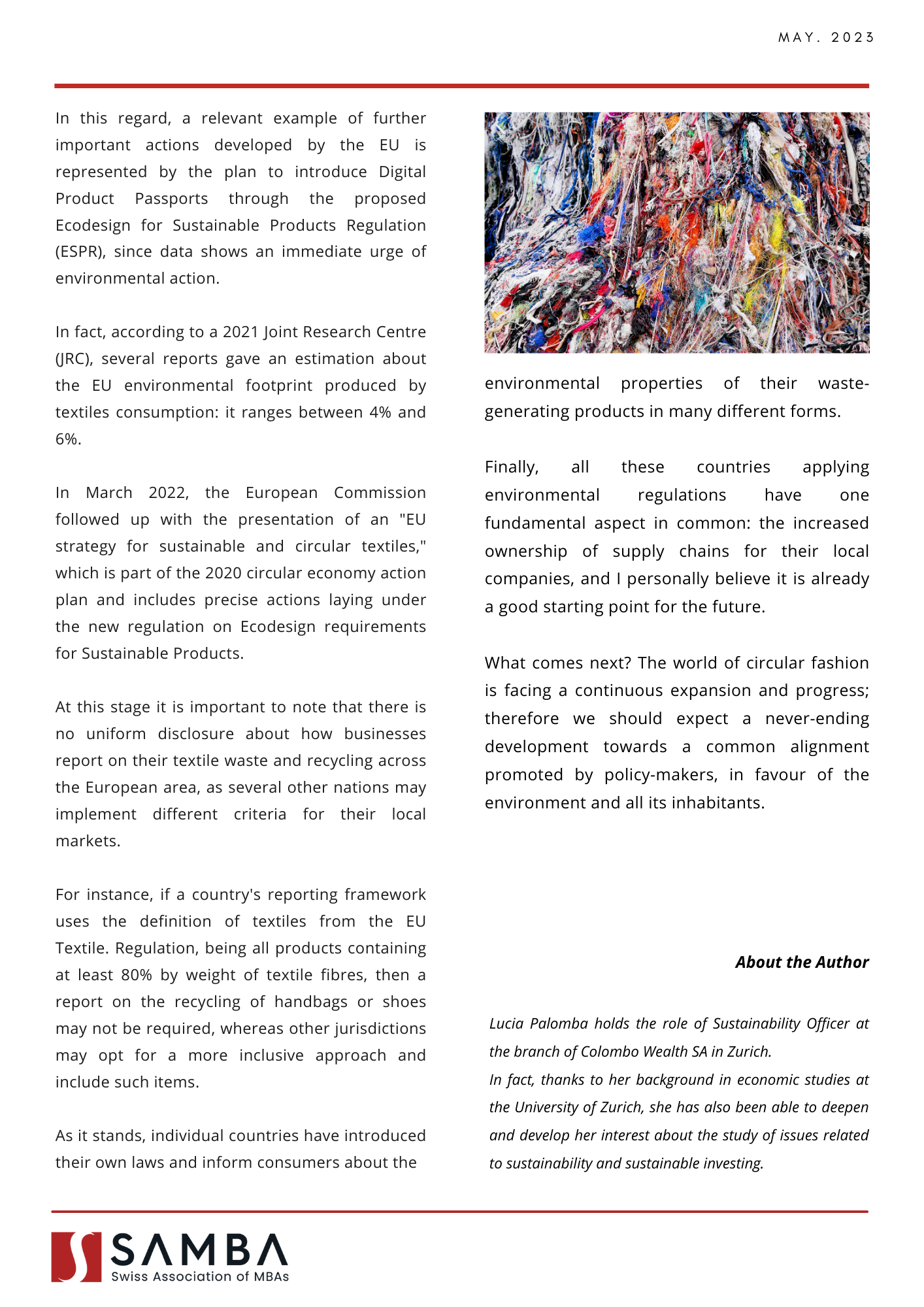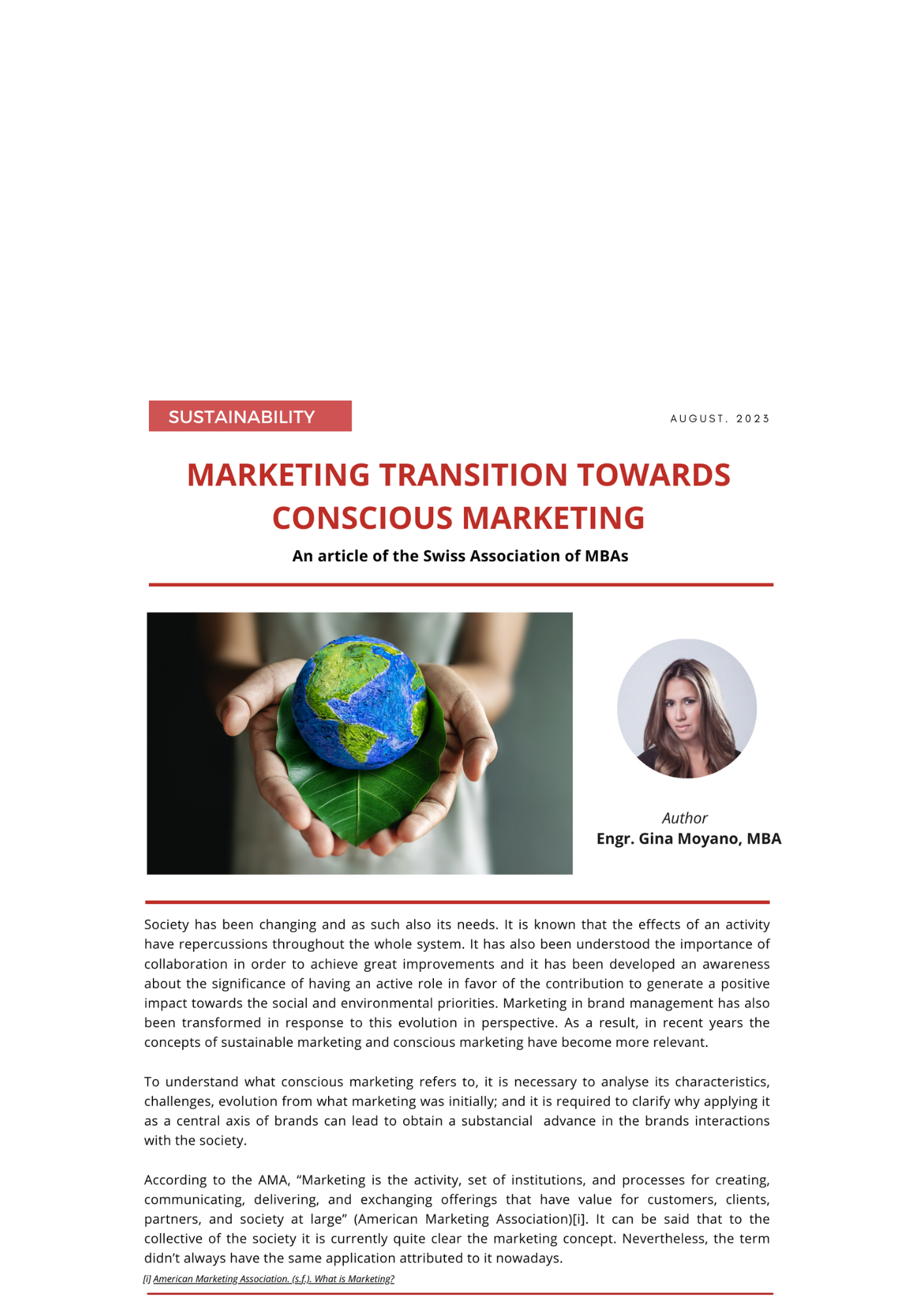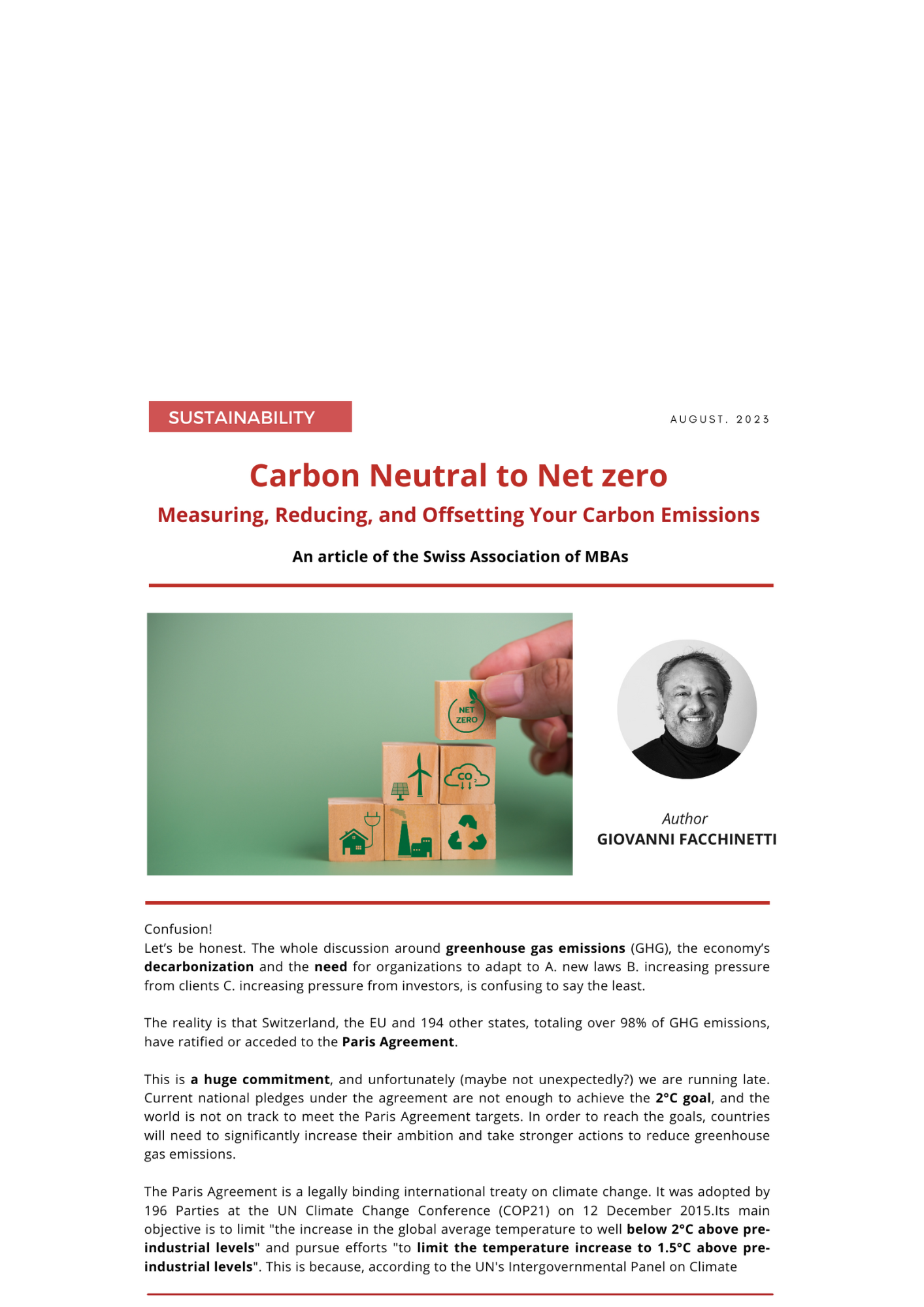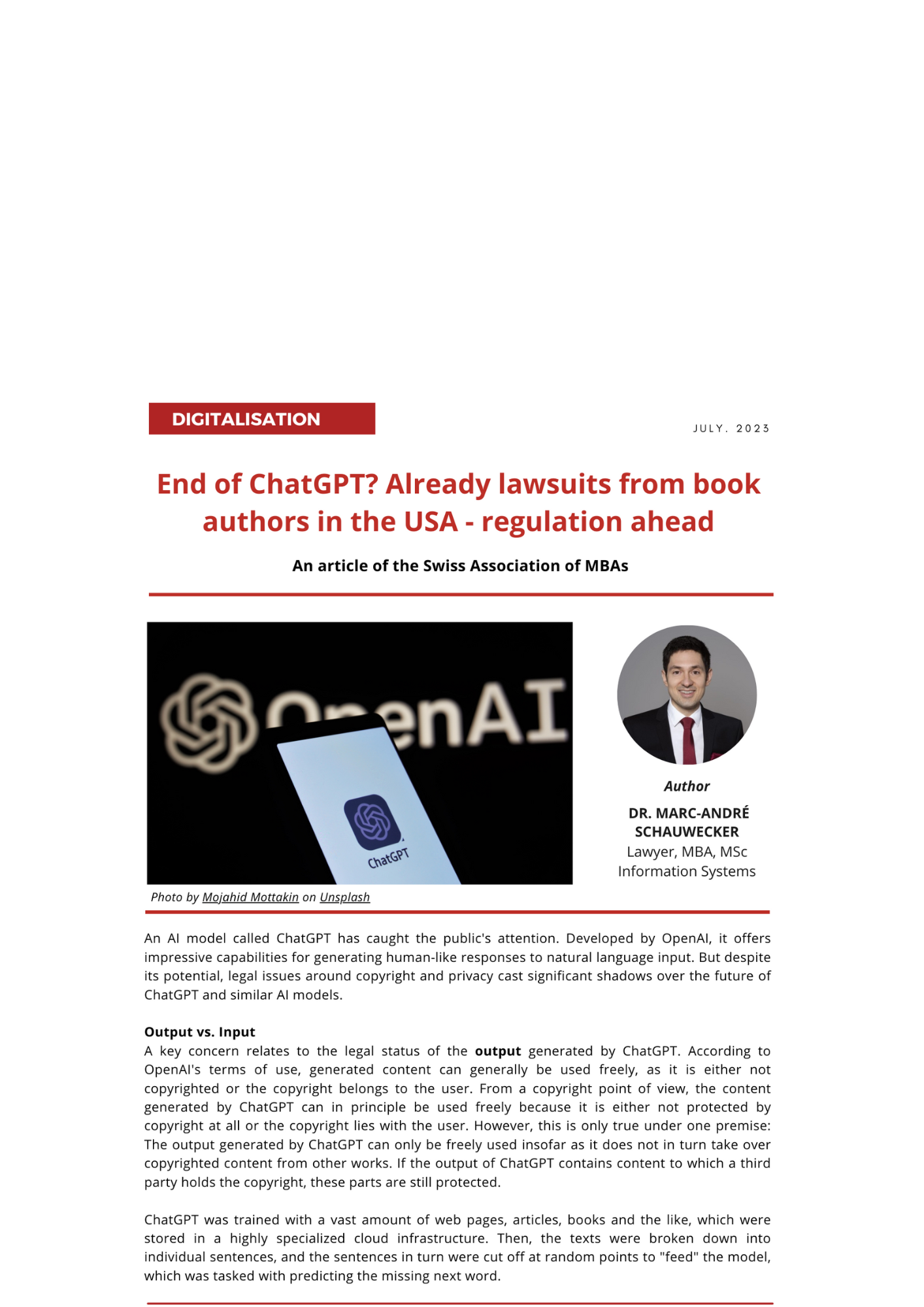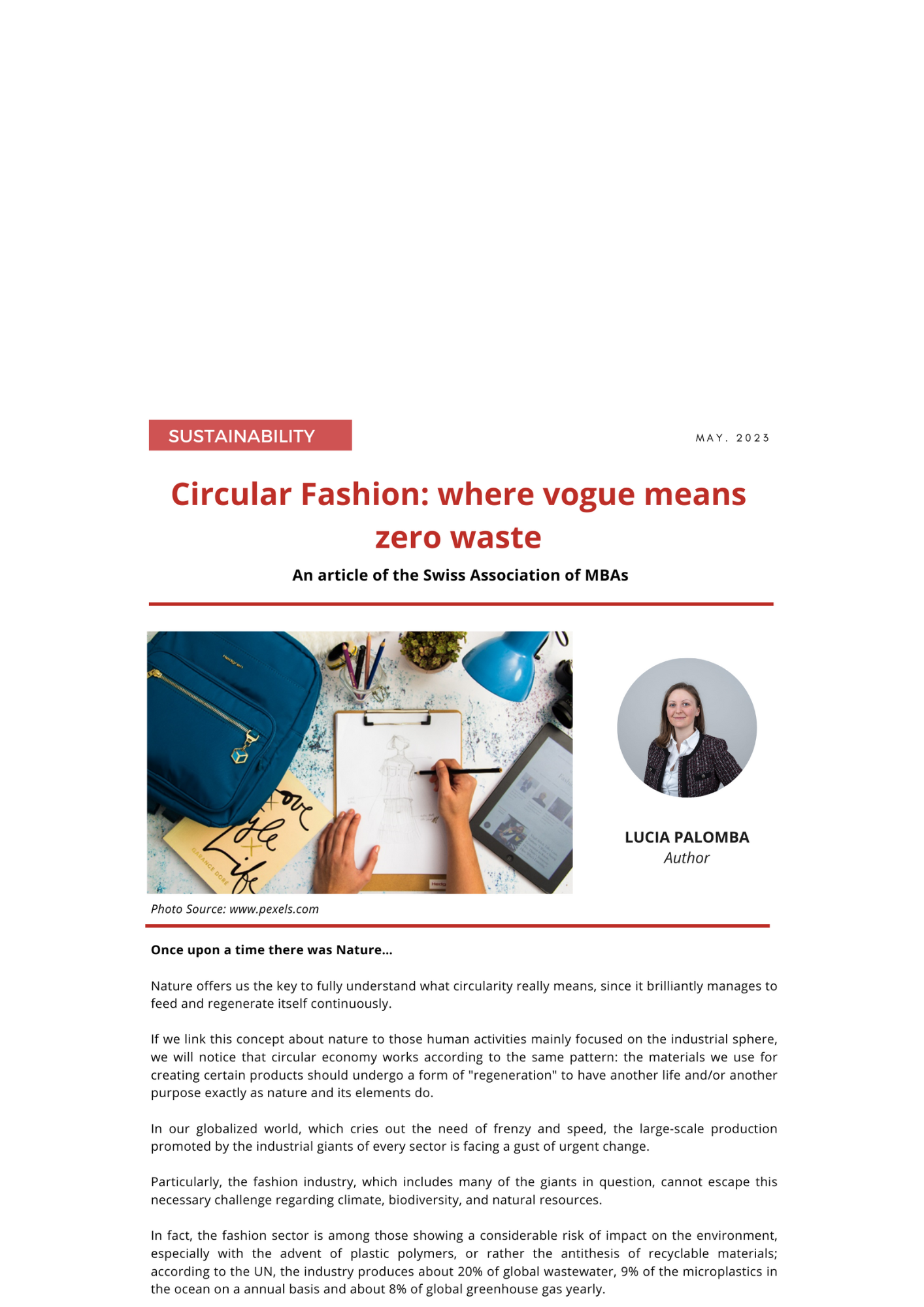
Circular Fashion: where vogue means zero waste
Once upon a time there was Nature…
Nature offers us the key to fully understand what circularity really means, since it brilliantly manages to feed and regenerate itself continuously.
If we link this concept about nature to those human activities mainly focused on the industrial sphere, we will notice that circular economy works according to the same pattern: the materials we use for creating certain products should undergo a form of "regeneration" to have another life and/or another purpose exactly as nature and its elements do.
In our globalized world, which cries out the need of frenzy and speed, the large-scale production promoted by the industrial giants of every sector is facing a gust of urgent change.
Particularly, the fashion industry, which includes many of the giants in question, cannot escape this necessary challenge regarding climate, biodiversity, and natural resources.
In fact, the fashion sector is among those showing a considerable risk of impact on the environment, especially with the advent of plastic polymers, or rather the antithesis of recyclable materials; according to the UN, the industry produces about 20% of global wastewater, 9% of the microplastics in the ocean on a annual basis and about 8% of global greenhouse gas yearly.
Nowadays, fashion companies start considering the production of sustainable garments, thanks to a careful assessment of resources and their use, by conducting an enriched type of analysis about the environmental impact.
Certainly, there are now endless opportunities to implement radical and transformative changes, while the greatest challenge for companies is to overcome current production models and move towards another vision and a different future.
This is essentially what we can call sustainable fashion, or in other words:
a system linked to SDG 12 scope, which promotes responsible consumption and production and that conceives the production of clothes and personal accessories through the implementation of a more responsible and thoughtful scheme.
This system assumes that the beginning of an object's life and its end are of equal importance.
But it is not only about that. Circular fashion concentrates its core value not only on long-term use, but above all on the reuse of a product, so that it never becomes waste.
Therefore, the "circular" currently aims to replace the old "linear”, with the goal to prevent the planet from the harmful impact that fashion had in the past.
This innovative journey starts from the origins of the raw material and has a well-defined goal to reach. Nevertheless, fashion companies now must solve the most complex puzzle: how to achieve this circular objective?
Among the diverse core analysis scenarios supported by the various players, it must be noted that the focus at a strategic level clearly lies on the analysis of the endpoints impact and on a “reverse logistics” approach applied to a traceability. What does in mean?
Let us imagine the complex system of production, distribution, and disposal of the product. In the linear system, we start from an initial step and establish a series of further processes up to the final step. Thus, a straight line is drawn. For these reasons we can call it “linear”.
In the circular system we have to close that line and create a circle in which the beginning and the end are of equal importance and always connected. In this case, the real key to success is to reason precisely from the final steps. They include two key elements: garments’ longevity with recyclability potential and traceability. These concepts can be translated into the following questions:
- where do garments end up? What elements and substances do they contain and what is their polluting rate?
- If the garments could be recycled, could it be possible to estimate a climatic and atmospheric higher benefit due to an increase in revenues generated by recycled clothes/fabrics compared to newly made products?
Several countries across the globe are committed at proactively answer these questions and do their part.
As a consequence, some important regulations came into force during the last ten years, with the aim to ensure substantial support for the change and manage all aspects related to its effective implementation.
The regulatory environment
The EU aims to align the standards of the textile and fashion sector with its sustainability goals, particularly by creating new channels for developing the shift from a linear consumption model to a circular economy. For these reasons, this industrial sphere is facing an interesting wave of change also because of the new regulations to be applied.
In this regard, the European Commission has the aim to:
1) establish a new framework for identifying sustainable products, by increasing the level of measure to guarantee the presence of circular textile items and the use of recycled materials;
2) discuss the existence of harmful chemicals.
Hence, it is imperative to mention the Corporate Sustainability Reporting Directive (CSRD) which came into force on January 5, 2023 and is already affecting the fashion industry.
This new directive has the scope to strengthen and implement additional sustainability reporting rules for EU companies, those firms listed on the EU-regulated market, as well as EU subsidiaries of non-EU parent companies.
In total, approximately 50’000 companies are now required to report on their sustainability strategies.
The new rules have an important role for the European economic scenario, as they will ensure an increased level of transparency about the impact of companies and their supply chains on people and the environment. Several counterparties, such as investors and other stakeholders will have access to the information they need to assess investment risks arising from climate change and other sustainability issues.
In this regard, a relevant example of further important actions developed by the EU is represented by the plan to introduce Digital Product Passports through the proposed Ecodesign for Sustainable Products Regulation (ESPR), since data shows an immediate urge of environmental action.
In fact, according to a 2021 Joint Research Centre (JRC), several reports gave an estimation about the EU environmental footprint produced by textiles consumption: it ranges between 4% and 6%.
In March 2022, the European Commission followed up with the presentation of an "EU strategy for sustainable and circular textiles," which is part of the 2020 circular economy action plan and includes precise actions laying under the new regulation on Ecodesign requirements for Sustainable Products.
At this stage it is important to note that there is no uniform disclosure about how businesses report on their textile waste and recycling across the European area, as several other nations may implement different criteria for their local markets.
For instance, if a country's reporting framework uses the definition of textiles from the EU Textile Regulation, being all products containing at least 80% by weight of textile fibres, then a report on the recycling of handbags or shoes may not be required, whereas other jurisdictions may opt for a more inclusive approach and include such items.
As it stands, individual countries have introduced their own laws and inform consumers about the environmental properties of their waste-generating products in many different forms.
Finally, all these countries applying environmental regulations have one fundamental aspect in common: the increased ownership of supply chains for their local companies, and I personally believe it is already a good starting point for the future.
What comes next? The world of circular fashion is facing a continuous expansion and progress; therefore we should expect a never-ending development towards a common alignment promoted by policy-makers, in favour of the environment and all its inhabitants.
About the Author
Lucia Palomba holds the role of Sustainability Officer at the branch of Colombo Wealth SA in Zurich.
In fact, thanks to her background in economic studies at the University of Zurich, she has also been able to deepen and develop her interest about the study of issues related to sustainability and sustainable investing.
